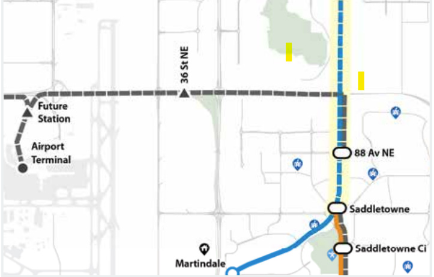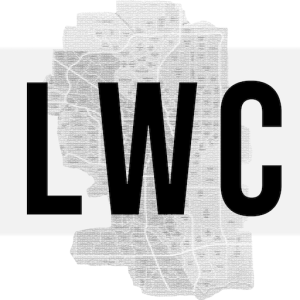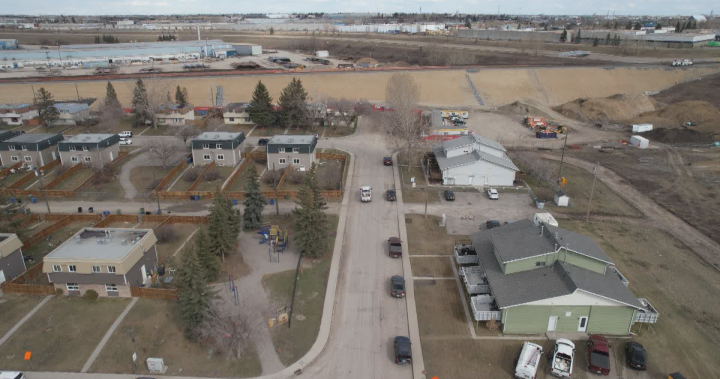I didn't realize this, but there is already north BRT construction work underway.
Link to project page.
There are new stations being built at Country Hills Blvd, 96th Ave, Beddington mall area, 78th, 64th, 56th, 40th and 28th Aves. The only one with a pull-out layby is 78th, which is a timepoint.
Also, new paving being done at four places; at CHB, at 96th Ave, at Beddington Trail and at 40th Ave.
40th Ave is a pure car capacity increase project; it's adding a left-turn lane. Beddington Trail is basically building the same thing that already exists at the bus-only crossing, but bigger and with more (red) concrete. 96th Ave is a small car capacity increase, making the northbound left turn lane longer.
Here's the CHB improvements: the pink is red transit-only paving, the yellow is car paving, the light green boxes are the stations.
Basically, adding a transit-only lane queue jump past the intersection and maintaining car capacity. Two things caught my eye. One is that southbound buses stop after the intersection, so the queue jump gets them to the station faster but they have to hope the traffic goes by while passengers are boarding.
The second thing I noticed is the sidewalk across the median on the south side (right side of the figure). There's a cross-slope across the median, so I suspect a straight across sidewalk is too steep for wheelchairs. The existing solution clearly isn't working well for most users, given the obvious desire line:
So I guess what they figured is that this shows that people really like walking in angles, so the new solution is:
Now there's twice as many angles to walk down! Win!

 livewirecalgary.com
livewirecalgary.com
